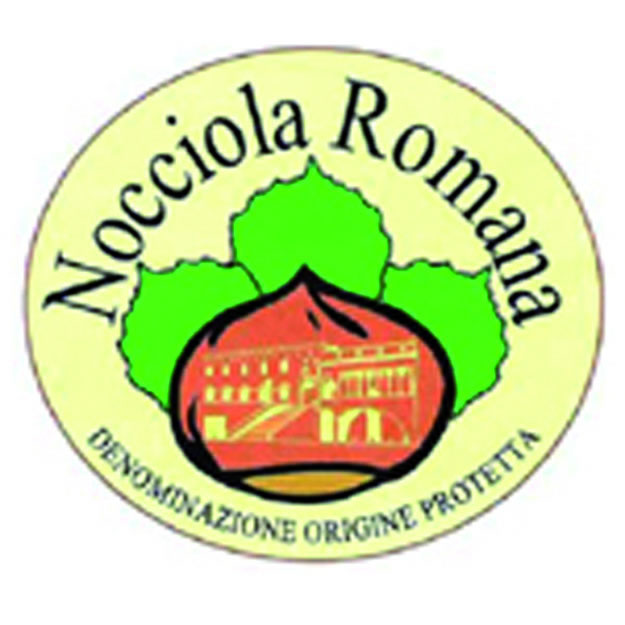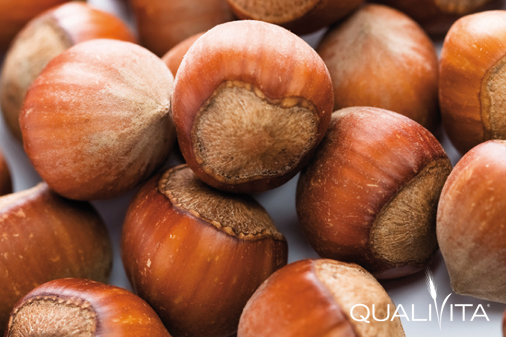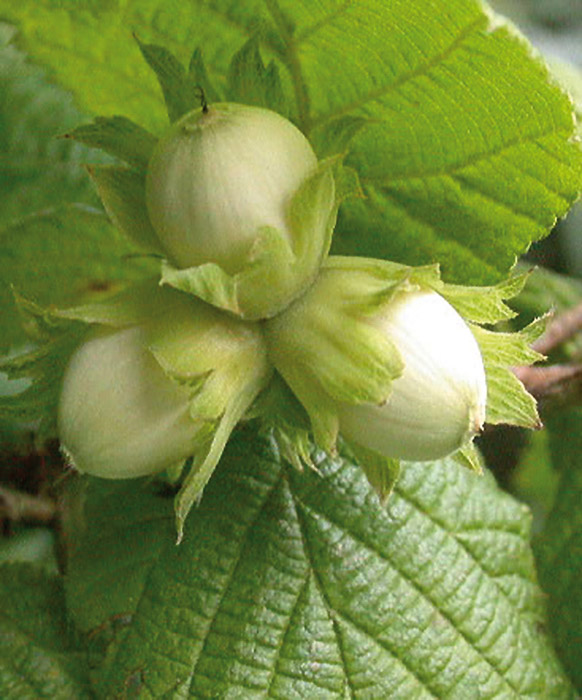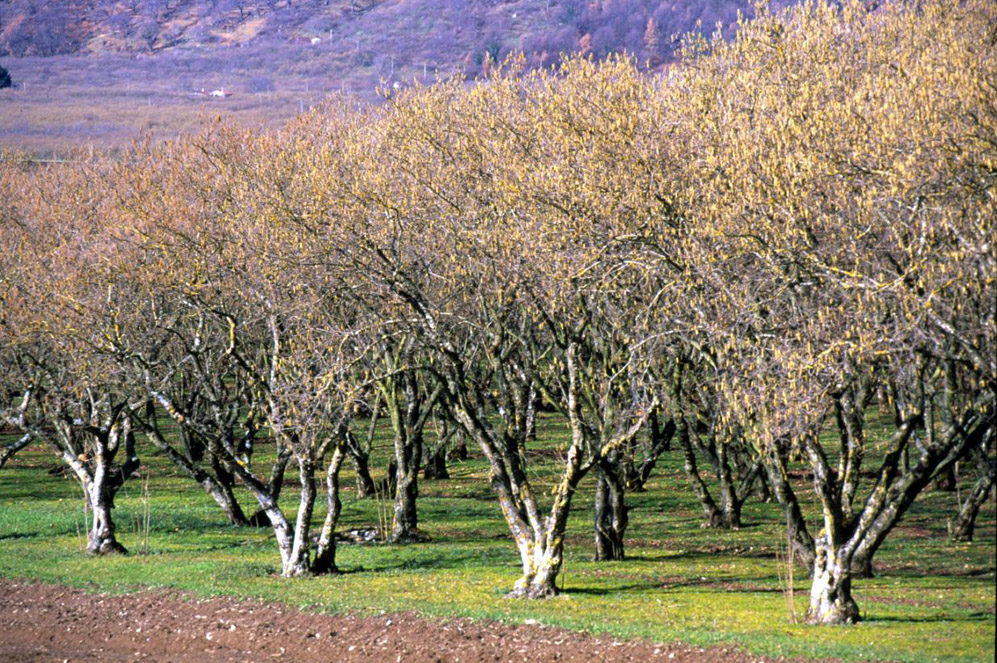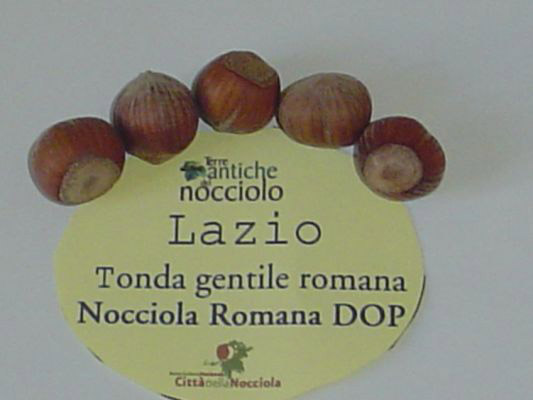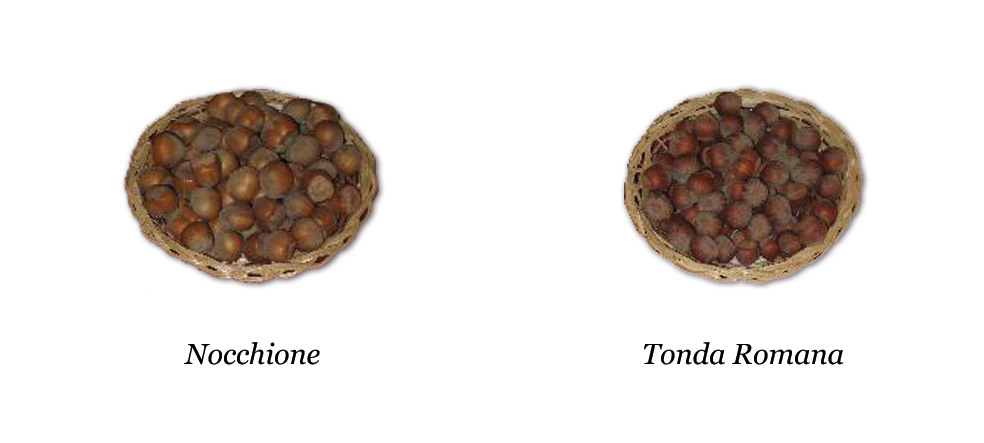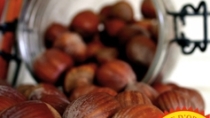Description
The Nocciola Romana PDO refers to the dried hazelnut, in its shell or shelled, belonging to the species Corylus avellana, deriving from the Tonda Gentile Romana and Nocchione varieties.
Production Area
The production area of Nocciola Romana PDO is within 6 municipalities in the Province of Rome, and 31 municipalities in the Province of Viterbo, in the Lazio region.
Production Method
The plants are cultivated with the “shrub”, “shrub vase” and “single plant” plantation systems. The number of plants per hectare vary from 150 to as many as 800. The shrubs are pruned annually and fertilising must not force production. Harvesting can be carried out between August 15th and November 15th, although generally most of the hazelnuts are harvested by mid-September, when they are fully ripe. The fruit are gathered from the ground and never from the tree. However, if the hazelnuts are left on the ground for too long their quality can be jeopardised, and therefore the use of driven or “self-propelled” machines is permitted. The hazelnuts are then dried in special drying rooms until they reach a maximum moisture content of 6%, with a maximum tolerance of 10%. Finally, where required, the hazelnuts are shelled, selected, weighed and dried. All these operations must be completed by August 31st of the following year.
Appearance and Flavour
Nocciola Romana PDO has a sub-spherical, spherical or sub-ellipsoidal shape. The shell size ranges from 14 to 25 mm. It has a very delicate and persistent flavour and a compact and extremely crunchy texture.
History
The cultivation of hazelnuts in the Lazio region boasts ancient origins. The presence of the Tonda Gentile variety in the area goes back to pre-Roman times, whilst there is evidence of its cultivation since the fifteenth century. The consumption of this exquisite dried fruit became popular during the following century, and was also known to enrich Papal banquets. In the Storia del Carnevale Romano by Filippo Clementi, nocchie (hazelnuts) were mentioned as a food that was much appreciated by Pope Leone X. The reputation of Nocciola Romana grew over time, until reaching its peak in the 20th century, when it succeeded in finding its own niche on the agri-food market, above all as a basic ingredient in confectionery products.
Gastronomy
Nocciola Romana PDO must be kept in a cool place away from sources of heat, light and humidity. The hazelnuts can be eaten raw, dried or roasted. The culinary tradition of Viterbo combines them with many meat-based dishes. They are also used as an ingredient in many desserts, including typical cakes and biscuits such as tozzetti, ossetti da morto, brutti buoni and mostaccioli.
Marketing
The product is marketed as Nocciola Romana PDO. It is sold in its shell, also roasted, in fabric bags made of suitable materials; shelled, also roasted, and peeled in food-grade containers, with no restrictions on weight. Nocciola Romana PDO is also available as an ingredient in processed products such as chopped hazelnuts, paste, cream, spread, biscuits, cakes, and desserts.
Distinctive Features
The distinctive climatic and territorial characteristics of the production area contribute to making Nocciola Romana PDO a unique product, in particular due to its crunchiness and compact, uniform texture, without any hollow spaces inside. The volcanic soils, rich in micronutrients and potassium, are complimented perfectly by the mild climate of Mounts Cimini and Sabatini, where temperatures are in complete harmony with the plant’s stages of development.



